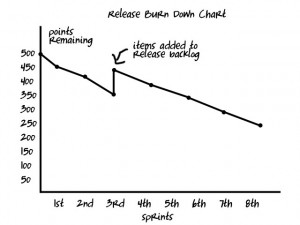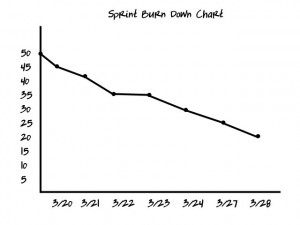-
Contributors
The Agile Dictionary is sponsored by Agile Learning Labs, and maintained by an amazing group of volunteers.
b is for...
Backlog
In general a backlog is a set of items of work to be done or that might be done. A work item may be a change to an existing product feature, a new feature, a fix for a defect, a change in the environment that the product runs under, or any other activity that may contribute to its value such as a refactoring of software.
In the scrum framework and other agile approaches, a product backlog or release backlog is ever-evolving and continuously updated. It is the single source from which work items are discussed, refined, selected, and committed to. Backlog items may be at different levels of detail, some with sufficient detail that they are ready to be implemented, others with a general description that will need further refinement. Backlog items may use different formats such as user stories.
A backlog item may include its business value as provided by the customer. It may include a size that is an estimate of the amount of effort to implement it. A backlog may have its items sequenced into an ordering in which they are to be implemented, where the order is determined by considering business value and size along with other factors such as dependencies.
In addition to the product backlog, an agile team typically creates a backlog specifically for each development iteration, known as an iteration backlog or sprint backlog. The items in a sprint backlog are drawn from the product backlog. Those items should be considered sprint ready.
Further Learning
Product Backlog – Agile Alliance glossary
Sprint Backlog – Agile Alliance glossary
The 2020 Scrum Guide – Product Backlog – Ken Schwaber and Jeff Sutherland
The 2020 Scrum Guide – Sprint Backlog – Ken Schwaber and Jeff Sutherland
Agile Product Backlog with User Story Mapping – Video, 9 minutes
Product Backlog Management: What NOT to do – Video, 6 minutes
Posted in b
2 Comments
Backlog Refinement
Backlog refinement is the process of adding new user stories to the backlog, re-sequencing existing stories as needed, creating estimates of effort for previously un-estimated stories, and decomposing large stories into smaller stories or tasks.
Backlog refinement is both an ongoing process as well as more specifically the event or ceremony that occurs regularly within a team’s iteration cycle to accomplish the above.
Scrum trainer and consultant Roman Pilcher explains the significance of backlog refinement to the agile development process: “Grooming the product backlog collaboratively creates a dialogue within the scrum team and between the team and the stakeholders. It removes the divide between “the business” and “the techies.” It eliminates wasteful handoffs, and avoids miscommunication and misalignment. Requirements are no longer handed off to the team; the team members co-author them. This increases the clarity of the requirements, leverages the scrum team’s collective knowledge and creativity, and creates buy-in and joint ownership.”[1]
Scrum Alliance founder Ken Schwaber recommends that teams allocate 5% of their time to revisiting and tending to the backlog.
Background Of The Term
This was originally called “backlog grooming” but was changed in 2013 due to the current negative connotation of “grooming”. See Child Grooming.
The ceremony is also known as “backlog maintenance” and “story time“.
Further Learning
Backlog Refinement – Agile Alliance glossary
Daddy, Where Do Product Backlog Items Come From? – Agile Learning Labs – blog post
What NOT to do during Product Backlog Refinement? – Serious Scrum – blog post
[1] https://www.agileconnection.com/article/grooming-product-backlog
Posted in b
Leave a comment
Burndown Chart
Burndown charts plot units of work that remain to accomplish (y-axis) against units of time (x-axis). In scrum the burndown chart is commonly used to track and forecast progress.
Release Burndown
The units of work that appear on a burndown chart are derived from items in the release or product backlog. During the process of backlog refinement items are assigned an estimated point value that is a measure of effort (also known as “story points” or “size”).
The trend line on a release burndown chart will generally trend downward. However, if new items are added to the release backlog, then the total points remaining may go up.
The release burndown chart is the primary tool a team has for visualizing their “velocity”, which is the average number of points they accomplish during an iteration.
Iteration / Sprint Burndown
The initial point value of work remaining in a sprint burndown chart derives from the backlog items the team commits to during the sprint. Work remaining is generally graphed daily. The number of points the team undertakes is based on their established team velocity, i.e., the number of points they routinely have completed historically.
In scrum, no new work may be added once a sprint has begun, so the trend line will never rise. However, in Extreme Programming, work may be added during a sprint, so the trend line may rise.
Further Learning
Burndown Chart – Agile Alliance glossary
Posted in b
Leave a comment



